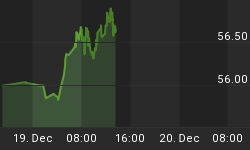There is no real secret to the market. In fact, it is rather simple. But, that does not mean the specific smaller degree moves in the market will be just as simple.
You see, markets are no different wherever you look. Whether that be metals, equities, Forex, crypto-currencies, etc, they all react in the exact same way. Markets simply move from one extreme to another. And, we need to be able to identify where those extremes can cause a turn.
Moreover, in making your determination of turning points, there is no one definitive point at which a market must turn. Rather, we are dealing in probabilities when we attempt to analyze that which is non-linear in nature, such as the financial markets.
For those that have followed me for years, you would know that this is exactly how I apply my analysis. As an example, we were able to identify major shift changes in the DXY when we called for a multi-year rally in 2011 when we were in the 74 region, with a long term target in the 103.50 region.
Another example was when we caught the top in the gold market in 2011 within $6 of the high actually struck. However, our initial expectation was that gold would see a 40% pullback. And, before gold even struck its high, we noted that if that 40% drop would not hold support, it could open the door for gold to correct all the way back down to the $1,000 region. Many disregarded our analysis since everyone was so certain it would easily eclipse the $2,000 region during the parabolic phase it was in at the time I made this call. So, when gold gave us a 40% correction from our top call, we began looking for a resurrection of the bull market. Yet, when the market made it clear that it was not going to resurrect, we began looking down to that $1,000-1100 region before looking for another bottoming structure.
This is how we view markets, as we do not believe that anything MUST happen within the financial markets.
As another example, back in 2015, we had LONG term targets in the SPX at 3500. And, we maintained this perspective even when the market pulled back to the 1800 region in early 2016. Our immediate target from the 1800 region was the 2537-2611 region, at which time, we expected a standard pullback before we would march onto our next target region between 2800-3000.
Well, as you can see, we were clearly not perfect in our smaller degree expectations for a pullback from our initial target zone. While I would love to be able to accurately identify each twist and turn in the market, the fact that I am a fallible human being attempting to analyze a non-linear system makes perfection unattainable.
Again, we deal in probabilities when we analyze these non-linear financial markets. That suggests we should not expect a market moving in one direction for an extended period of time. And, clearly, we did not expect a market to pullback to only .118 and .236 retracement levels, when standards suggest .328-500 retracements. Yet, that is all the pullback that the market gave us on our way up towards the 3000 region.
So, while markets often provide us standard paths to follow the great majority of the time, if one understands the non-linear nature of the market, then one also understands that the market will act outside of standards in the minority of times. That is what seems to have occurred in the last 6 months. But, that does not mean one should abandon analyzing markets based upon standard higher-probability patterns to which the market adheres the great majority of the time. Rather, it means one has to understand that the market may not adhere to those patterns in the minority of instances, accept that, and move on.
In summary, one must maintain a broader perspective of the market based upon probabilities. And, in order to maintain an appropriate risk management perspective, one should reduce their higher risk positions when we strike a standard target, but maintain core stock holdings during a long term 3rd wave. This is what I noted to the members of my services, and how I handle a market that extends beyond standard expectations.
Lastly, to show you the general perspective I have maintained in the overall equity market for many years, I am attaching a monthly chart of how I see us continuing in this bull market, which likely still has a number of years to run. While we are certainly getting closer to a point where a 15-20% correction can be seen, that will simply be another buying opportunity before the market rallies north of 3500SPX in the early 2020’s. And, for those wondering, this chart has been relatively unchanged for the last several years, other than adjusting for this extension in wave (3) of v of 3.
See charts illustrating the wave counts on the S&P 500.
By Avi Gilburt via ElliotWaveTrader















